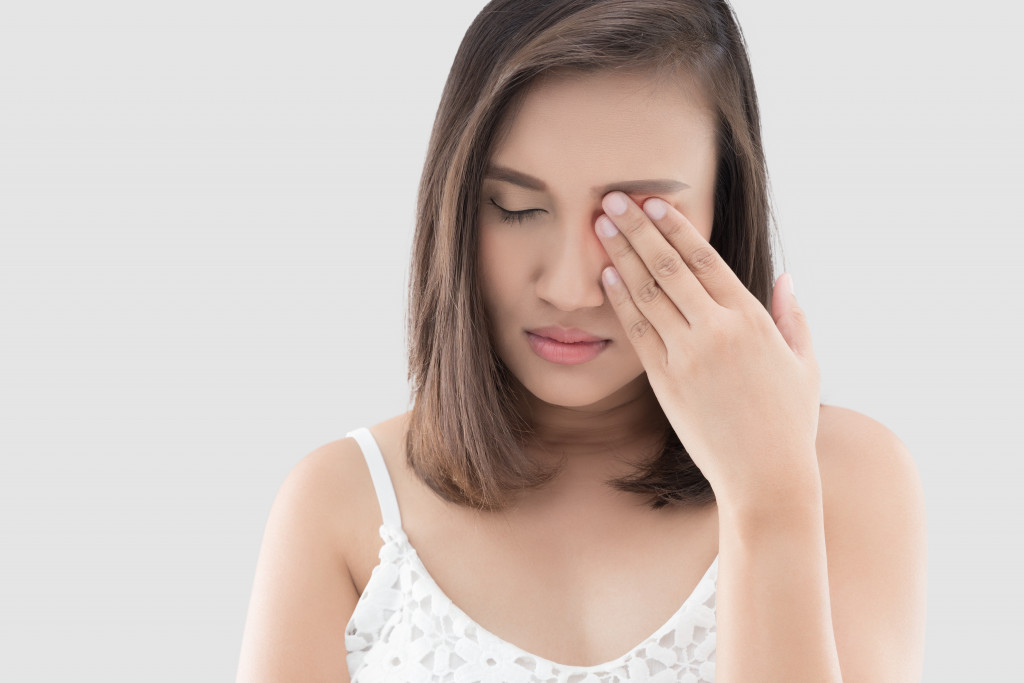Conjunctivitis, or more commonly known as pink eye, is an infection with many causes. If bacteria or viruses cause it, then it will be diagnosed as infective conjunctivitis. However, if the inflammation is caused by an allergen, like pollen or dust mites, it will be known as allergic conjunctivitis.
What Is Allergic Conjunctivitis?
The conjunctiva is the connective tissue found at the surface of an eyeball and the inner layer of an eyelid. When an allergen gets to the conjunctiva, it can cause an inflammation known as allergic conjunctivitis. And if the inflammation occurs simultaneously with rhinitis, it will be known as allergic rhinoconjunctivitis.
Since many kinds of allergens are present in a person’s environment, there’s no telling what type of allergic reaction may occur. But allergy care professionals have narrowed down allergic conjunctivitis to four main types, namely:
1. Seasonal
Seasonal allergic conjunctivitis is also known as hay fever because it usually occurs around the haying season, which happens during spring and summer. Since there is a higher pollen count during these seasons, there’s a much higher possibility of it triggering allergic reactions. But because this is the most common type of allergic conjunctivitis, seasonal allergies treatment is more readily available and accessible to those in need.
2. Perennial
Unlike seasonal allergic conjunctivitis that only occurs during specific seasons, this type of inflammation can happen anytime. This is perennial allergic conjunctivitis occurs because of the continuous presence of allergens like dust mites, pet dander, and other contaminants invisible to the naked eye.
3. Contact
Aside from allergens, some products can also come into contact with the conjunctiva and irritate sensitive skin. This can include make-up and skincare products, chemicals, eye drops, or other materials that aren’t supposed to even come close to the eyes. Hence, the contact allergic conjunctivitis.
4. Papillary
This type of allergic conjunctivitis often occurs in people who wear contact lenses, as they come in direct contact with the surface of their eyeballs. Papillary conjunctivitis usually affects both eyes, and it can lead to intolerance, itchiness, or teary eyes over time.
It can even leave red bumps on the inner eyelids or create an uncomfortable discharge in severe cases. Those who experience papillary allergic conjunctivitis may be asked to forego their contacts or switch to another type of lens to reduce the chances of inflammation.
What Are Its Usual Symptoms?

Much like other allergic reactions, the most common symptom of allergic conjunctivitis is an evident irritation in the eye. It can lead to redness and an itching or burning sensation on the eyes’ surface, which can be extremely uncomfortable.
The allergy can also create a watery discharge or cause you to tear up as a coping mechanism for the inflammation. And because allergic conjunctivitis can occur simultaneously with rhinitis, it can lead to uncontrollable sneezing as well as a blocked, runny, or itchy nose.
How Can It Be Treated?
Since allergic conjunctivitis is a common condition, there are many readily available treatments for it. For mild cases of the condition, taking an antihistamine or using anti-inflammatory eye drops may be able to do the trick. It would also be wise to avoid coming into contact with the allergen that caused the inflammation in the first place.
However, if this is not sustainable, you might want to consider allergy shots or immunotherapy as a long-term treatment. This can ultimately reduce your symptoms and improve your quality of life because you will no longer have to avoid your triggers. Plus, you won’t have to deal with intense allergic reactions for the foreseeable future.
The allergy shots work in the same manner that vaccines do. They minimize your sensitivity to specific allergens and build up your tolerance so that your body won’t react negatively if ever it comes into contact with the allergen again in the future. This way, you won’t have to rely on antihistamines to control your symptoms alone.
But aside from these short-term and semi-permanent cures, prevention is still the best way to reduce your triggers. You can become warier during seasons when there’s a high pollen count in the air and minimize the entry points in your home where they can enter. You can also use an air purifier to maintain your indoor air quality and ensure that your home is free of allergens.
Final Thoughts
To date, a cure that can eradicate allergies has yet to be invented. But there are plenty of ways to manage your symptoms without letting them debilitate you or negatively affect your life. So until that day comes, don’t discount the benefits of understanding your condition and getting it treated immediately.
